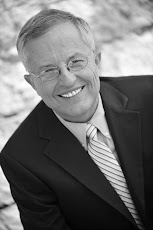Forty years ago, on January 20, I was serving as editor of The Baylor Lariat, the student newspaper at Baylor University in Waco, TX, and busy supervising the newspaper's coverage of the inauguration of Richard Nixon to succeed Lyndon B. Johnson as President of the United States.
Our student newspaper desks contained the old Royal manual typewriters. Stories were typed on paper, then edited by hand before being transported by foot across campus to the Baylor Press, where they were keypunched into an old linotype machine complete with hot, molten metal.
We watched the Nixon inauguration on a 13-inch, black-and-white TV carted into The Lariat newsroom for inauguration day. We obtained our Associated Press wire stories about the event from an old AP machine that noisily flowed a steady stream of paper from its top.
This past Tuesday, January 20, I thought back to those days while I visited The Baylor Lariat offices, one of my few times since 1969 to be there. I just marveled at how things had changed and yet how they had remained so much the same.
Student reporters this week sat in front of beautiful, clean iMac screens. They watched the news on a large, overhead color TV that appeared to be a permanent fixture in The Lariat newsroom. Their news of the inauguration of Barack Obama arrived via emails and blogs written by four Lariat students in D.C. for the event. (Student reporters in my day would have been blown away by the possibility of The Lariat paying their way to Washington for the inauguration.) Lariat stories and layouts of the paper moved electronically at lightning speed across campus to the printing presses of the local Waco newspaper.
Watching President Obama's inauguration also stirred other memories of four decades earlier. I entered Baylor the same semester John Westbrook broke the racial barrier, moved into Baylor's Martin Hall (where I lived at the time), and joined the Baylor Bears on the football field. As The Lariat editor in 1968-69, I hired the first African-American reporter for the school's newspaper. His name was Willie White. I worked diligently to see that he was in line to become editor of The Lariat two years later. I also wrote an editorial in The Lariat welcoming Dr. Vivienne Mayes as the first Baylor professor of African-American heritage to the campus. My editorial scolded the Baylor administration for waiting so long to hire a black professor and also for trying to play down the fact that Dr. Mayes had been denied admission as a student some years earlier because of her race.
So here I was 40 years to the day later sitting in The Lariat newsroom watching on TV as America inaugurated its first President of African-American heritage. The goose bumps told me that was actually more overwhelming than was seeing the computers sitting on the students' desks.
(Adding to my feeling of being surrounded by history, later that day I also was on Interstate 35 after former President George Bush landed in Waco and his motorcade traveled on to Crawford.)
I was there as a guest of the Journalism Department to talk about my career in religion journalism and my new book, Witness to the Truth about my 40-year career. I spent two days lecturing in classes, chatting with students, and visiting with professors in both the journalism and religion departments. What a marvelous and humbling experience it was!
I must admit I felt a bit ancient looking into the faces of the young student journalists—and even into the faces of many of the journalism professors. I was grateful that my host, longtime friend from college days and now Baylor journalism professor Mike Blackman, accompanied me most of the time I faced the youngsters.
I also thanked God that most of the religion professors with whom I dined were around my vintage.
Lariat reporter Jenna Williamson did a excellent job in her interview and article about Kay and me being back in The Lariat newsroom for the inauguration coverage. (Though she certainly doesn't look like she's been around that long, Kay had been city editor of The Lariat back then.)
Students seemed bright-eyed and eager to learn. I particularly enjoyed giving lectures on ethics in the media. Some of my greatest delights arrived afterward when Jenna, Mike, and others wrote to say students were still discussing what I had to say about ethics in the field of journalism. I had been able to tell by their eyes, rapt attention, and questions that they were listening without diversion.
As Kay and I bid adieu to the faculty and students Wednesday afternoon, we felt really good about the future of newspaper reporting in the next generation. Baylor journalism grads have always been a magnificent lot. Our peers have contributed much to newspapers over the past 40 years. I'm now confident that tradition will carry forth into future years.






No comments:
Post a Comment